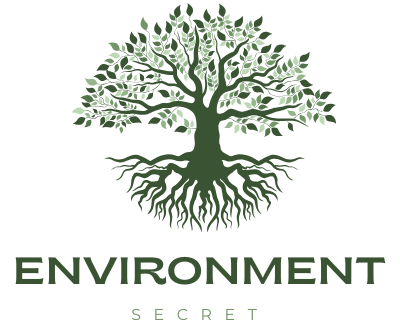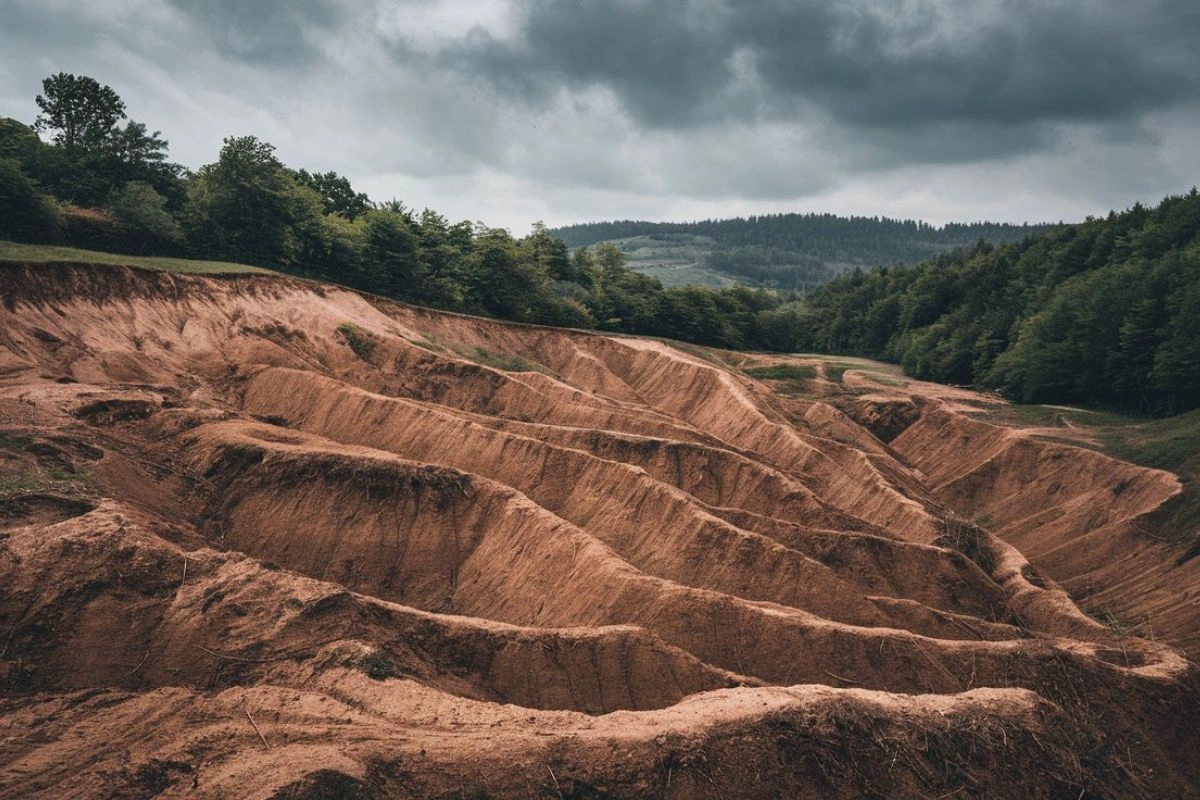Soil erosion is a natural process that plays a crucial role in shaping the Earth’s surface. However, when accelerated by human activities, it becomes a major environmental challenge. Defined as the displacement of the upper layer of soil by natural forces like wind and water or human activities such as agriculture and deforestation, soil erosion threatens food security, water quality, and ecosystems globally. Addressing this issue is vital for sustaining life on Earth and ensuring long-term agricultural productivity.
In this article, we’ll explore the causes, impacts, and solutions to soil erosion, emphasizing the importance of sustainable land management practices.
1. Introduction to Soil Erosion
Soil erosion is the gradual removal of the topsoil layer, which is rich in organic matter and nutrients essential for plant growth. While natural erosion occurs over geological timescales, human activities have drastically increased its rate, leading to severe environmental and socioeconomic consequences. According to the Food and Agriculture Organization (FAO), an estimated 24 billion tons of fertile soil are lost annually due to erosion, making it a global crisis.
This issue has far-reaching implications, affecting food production, water availability, and biodiversity. Understanding and addressing soil erosion is critical to achieving sustainable development goals and ensuring ecological balance.
2. Understanding the Dynamics of Soil Erosion
Natural Erosion vs. Accelerated Erosion
- Natural Erosion: This slow process occurs over millennia, shaped by wind, water, and other natural forces. It helps create landscapes and replenish soils in some areas.
- Accelerated Erosion: Caused by human activities, this rapid form of erosion depletes soil at a rate faster than it can be naturally replenished.
Types of Soil Erosion
- Water Erosion:
- Sheet Erosion: The removal of a thin layer of soil across a large area by surface water.
- Rill Erosion: Formation of small channels due to water runoff.
- Gully Erosion: Deep channels carved by heavy water flow, severely damaging land.
- Wind Erosion:
- Occurs in dry, barren areas where strong winds lift and transport soil particles.
- Tillage Erosion:
- Caused by improper plowing and farming practices, disturbing the soil structure.
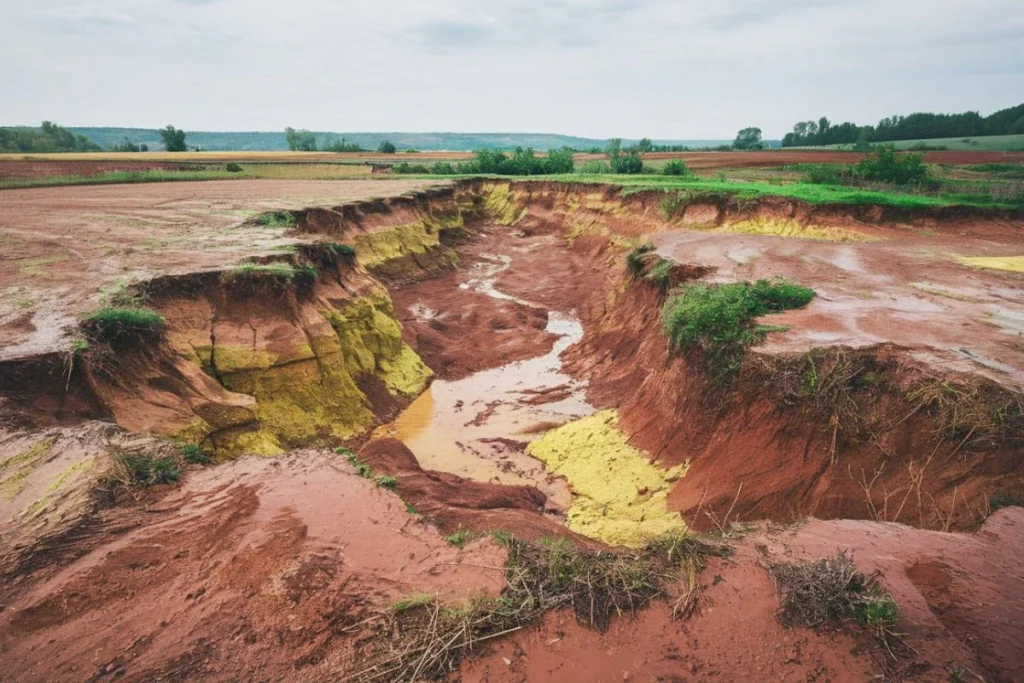
3. Causes of Soil Erosion
Natural Causes
- Rainfall and Runoff: Heavy rains wash away loose soil, especially on slopes.
- Wind: In arid and semi-arid areas, powerful winds strip away exposed soil.
- Topography: Steep slopes and uneven terrain accelerate soil movement.
Human-Induced Factors
- Deforestation: The removal of trees and vegetation leaves soil vulnerable to erosion.
- Overgrazing: Livestock consume vegetation, leaving soil unprotected.
- Unsustainable Farming Practices: Over-cultivation and improper plowing deplete soil health and structure.
- Urbanization: Construction and land clearing activities disturb the natural protective soil cover.
4. Consequences of Soil Erosion
Environmental Impacts
- Loss of Fertile Soil: Erosion depletes the nutrient-rich topsoil layer essential for plant growth.
- Water Quality Degradation: Sediments from eroded soil pollute rivers, lakes, and reservoirs.
- Habitat Destruction: Soil erosion alters ecosystems, threatening biodiversity.
Agricultural Effects
- Reduced Crop Yields: Declining soil fertility directly affects agricultural productivity.
- Increased Dependency on Fertilizers: Farmers must rely on chemical inputs to compensate for nutrient loss.
Economic and Social Ramifications
- Economic Losses: Reduced agricultural output impacts local and global economies.
- Food Insecurity: Soil erosion contributes to declining food production, exacerbating hunger and malnutrition.
- Displacement: Communities forced to migrate due to unproductive lands.
5. Areas Most Impacted by Soil Erosion
- Sub-Saharan Africa: Overgrazing and deforestation accelerate erosion in the Sahel region.
- South Asia: Monsoons and unsustainable farming practices degrade soil in countries like India and Bangladesh.
- South America: Deforestation in the Amazon basin leads to severe erosion.
- China: The Loess Plateau ranks among the most erosion-prone areas in the world..
6. The Impact of Human Activities on Accelerating Soil Erosion
Human activities like intensive agriculture, deforestation, and urban development have drastically increased soil erosion rates. Overgrazing by livestock and improper irrigation further degrade the land, creating a cycle of erosion and productivity loss.
7. Manifestation of the worsening phenomenon of soil erosion
Climate change amplifies soil erosion by:
- Intensifying Rainfall: Heavier and more frequent rains increase surface runoff.
- Rising Temperatures: Drying soils become more vulnerable to wind erosion.
- Extreme Weather Events: Hurricanes, floods, and droughts exacerbate land degradation.
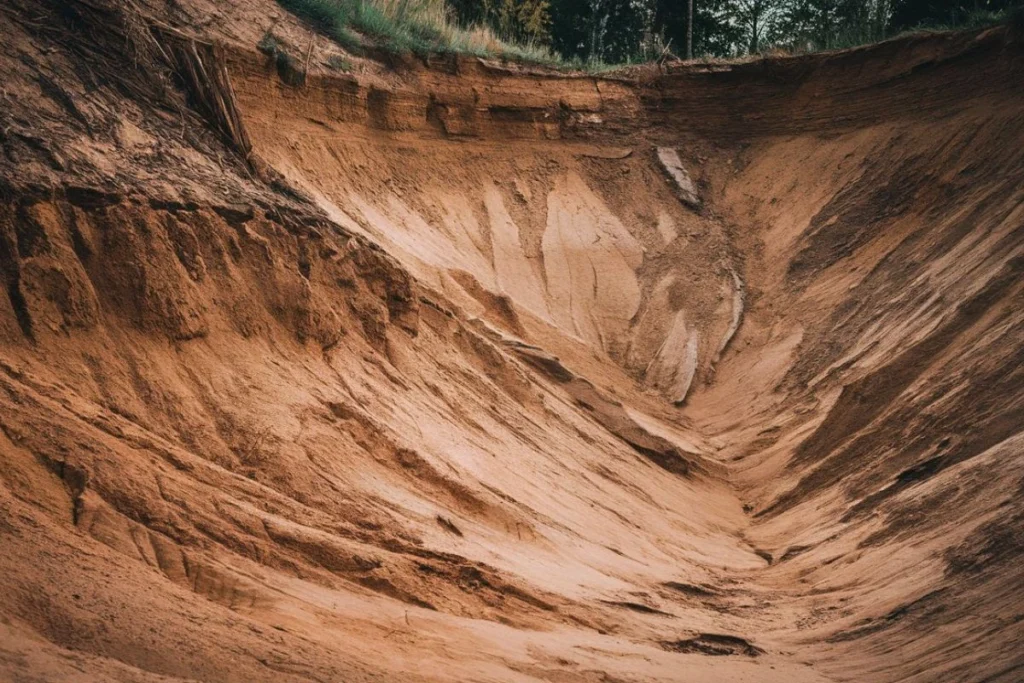
8. Solutions to Soil Erosion
Preventive Measures
- Vegetative Cover: Planting grass, shrubs, and trees stabilizes soil.
- Contour Farming: Plowing along the natural contours of land reduces runoff.
- Terracing: Creating stepped levels on slopes prevents water flow from washing soil away.
Mitigation Strategies
- Soil Mulching: Covering soil with organic materials reduces water loss and erosion.
- Windbreaks: Planting rows of trees or shrubs acts as a barrier against wind erosion.
- No-Till Farming: Minimizes soil disturbance during planting to preserve soil structure.
9. Innovative Technologies for Soil Conservation
- Satellite Monitoring: Tracks erosion patterns and identifies at-risk areas.
- AI-Driven Soil Analysis: Assists in optimizing land use and conservation techniques.
- Bioengineering: Uses living plants and structures to stabilize soil.
10. Community-Driven Approaches to Combat Soil Erosion
Community-driven approaches are vital in combating soil erosion, as local knowledge and participation can lead to effective solutions. Engaging communities in identifying erosion hotspots and implementing preventive measures fosters a sense of ownership and responsibility. Techniques such as building terraces, planting cover crops, and restoring vegetation are often more successful when communities are actively involved.
Education and awareness campaigns can empower residents to adopt sustainable practices and share knowledge about soil conservation. Collaborating with local organizations and governments can facilitate access to resources and technical support.
Furthermore, involving women and marginalized groups in decision-making processes ensures diverse perspectives and strengthens community resilience. By prioritizing local initiatives and fostering partnerships, communities can effectively combat soil erosion, enhance soil health, and promote sustainable land management practices that benefit both people and the environment.
11. Global Policies and Initiatives for Soil Conservation
United Nations Sustainable Development Goals (SDGs):
- Goal 15 focuses on protecting and restoring ecosystems and combating desertification.
The Bonn Challenge:
- A global effort to restore degraded land and enhance soil health.
FAO’s Global Soil Partnership (GSP):
- Advocates for sustainable soil management practices around the world.
12. Examples of Effective Soil Erosion Control Strategies
China’s Loess Plateau Rehabilitation
A large-scale restoration project transformed degraded lands into productive agricultural areas through terracing, reforestation, and sustainable farming.
Kenya’s Agroforestry Projects
Integrating trees with crops has significantly reduced erosion and improved soil fertility in rural Kenya.
13. Challenges in Addressing Soil Erosion
- Lack of Awareness: Many communities are unaware of sustainable practices.
- Resource Constraints: Developing nations often lack funds for large-scale conservation projects.
- Policy Gaps: Weak enforcement of soil conservation policies undermines progress.
14. The Future of Soil Conservation
The future of soil conservation is critical for ensuring sustainable agricultural practices and maintaining ecosystem health. As climate change and population growth intensify pressures on land, innovative approaches will be essential. Emphasizing regenerative farming techniques, such as cover cropping, crop rotation, and agroforestry, can enhance soil health and resilience.
Technological advancements, including precision agriculture and soil monitoring systems, will enable farmers to optimize resource use and minimize degradation. Education and community engagement are vital, as empowering local populations fosters stewardship and sustainable practices.
Policy frameworks that incentivize conservation efforts and support research into soil health will also play a crucial role. International cooperation is needed to share knowledge and resources, particularly in regions most affected by soil degradation.
Ultimately, a holistic approach that integrates environmental, economic, and social factors will be key to achieving effective soil conservation and ensuring food security for future generations.
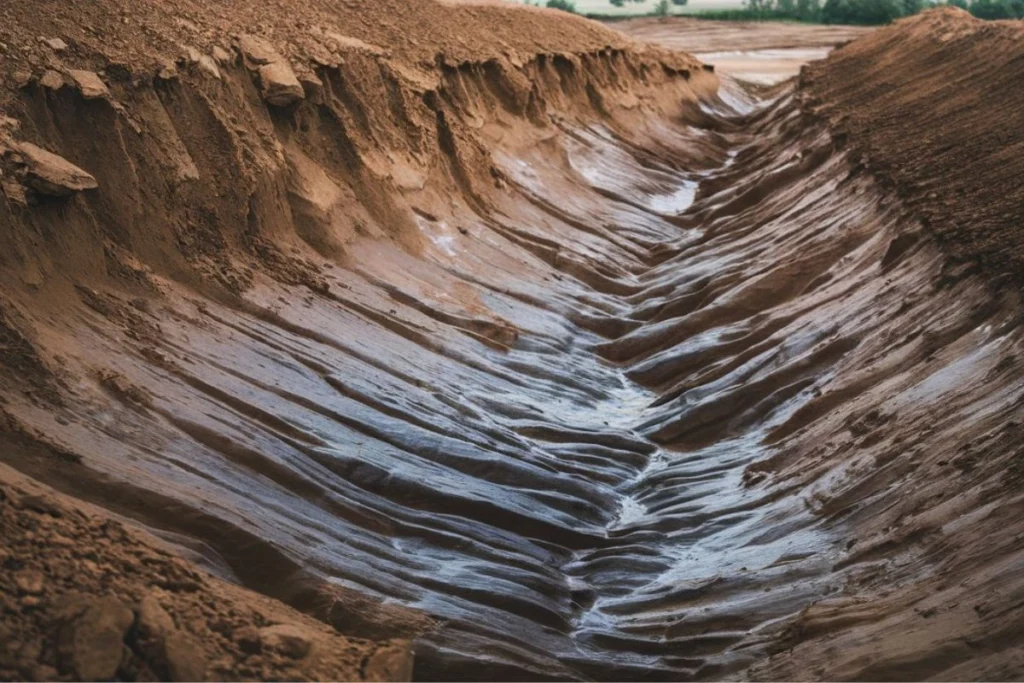
15. Frequently Asked Questions (FAQs)
1. What is soil erosion?
Soil erosion is the removal of the topsoil layer by natural forces like wind and water or human activities such as deforestation and farming.
2. Why is soil erosion a concern?
It leads to reduced soil fertility, lower agricultural productivity, water pollution, and habitat destruction.
3. How can soil erosion be prevented?
Planting vegetation, adopting sustainable farming practices, and managing water runoff are effective ways to prevent soil erosion.
4. How does deforestation contribute to soil erosion?
Deforestation exposes soil to erosion by removing the vegetation that stabilizes and protects it.
5. Can soil erosion be reversed?
Yes, through soil conservation practices such as reforestation, terracing, and the use of organic amendments, degraded soils can be restored.
Conclusion
Soil erosion remains a pressing environmental challenge with far-reaching implications for agriculture, ecosystems, and food security. Its causes are often rooted in unsustainable land management practices, deforestation, and climate change. Addressing soil erosion requires a multifaceted approach that includes adopting sustainable agricultural techniques, restoring degraded land, and implementing effective policy measures.
Community engagement and education play crucial roles in fostering stewardship and promoting conservation practices at the local level. By integrating traditional knowledge with modern technology, we can enhance soil health and resilience.
Ultimately, combating soil erosion is essential not only for maintaining soil productivity but also for safeguarding biodiversity and ensuring the long-term sustainability of our natural resources. A collective commitment to soil conservation will be vital for future generations, as healthy soils are foundational to thriving ecosystems and secure food systems.Share
